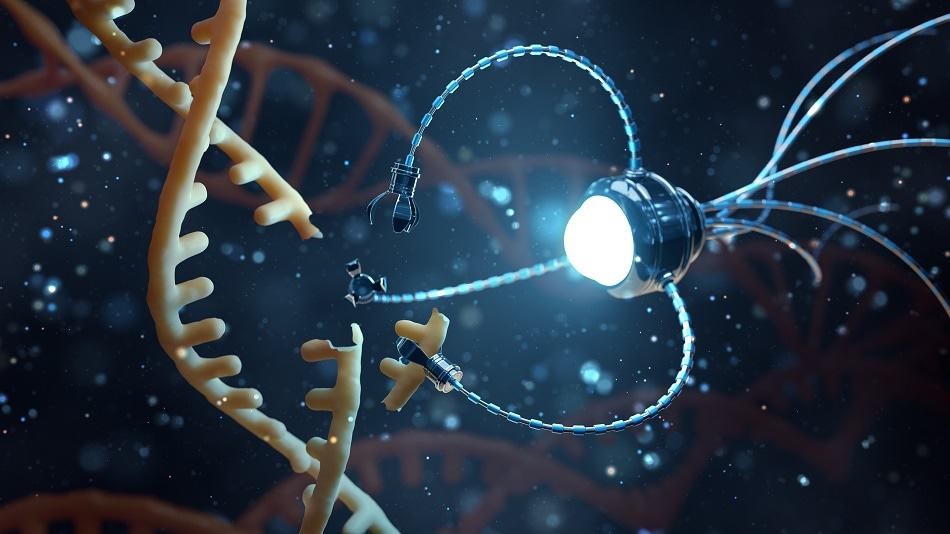Nanobots, are any molecules trained to do a specific activity such as target drug delivery. In essence target, drug delivery nanobots build the path to reducing the mortality rate with no side effects. It consists of a biosensor for target drug delivery, a molecular motor to move, and a payload for drug storage. It is controlled by emitting ultrasonic waves and navigated by MRI. it is also detected by x-rays, microwaves, and heat signals, followed by radioactive as well as a fluorescent dye.
What are nanobots?
Not to be confused with these fictitious nanorobots, a nanorobot, or nanobot, is a common name among medical nanotechnology researchers for molecules that have a unique feature that allows them to be trained to do a specific purpose. Any molecule that can be trained to do specific activity like target specific drug delivery are termed as Nanobots. They have a potential to make a revolution in the medical field.
Essentially target oriented drug delivery has been its advantage, and researchers around the world attempt to make it with less or no side effects. The nanobots are a potential revolution that is yet to take form in the medical industry. These nanobots are a reality that is currently being explored and developed.
Nanobots Mapping Nowadays a Creature
Nanometer-sized counterparts are exceedingly tiny and are known to act substantially than bigger objects. By researching characteristics and controlling materials at the level of the nanoscale, scientists and engineers have created the multidisciplinary discipline of nanomaterial. Nanoscience, nanotechnology, and nanoengineering provide previously unimaginable novel insights and inventions. Nanotechnologies, as well as their charges, usefulness, hazards, and advantages, are inextricably linked to the economy and ethical standards.
Nanobots consist of: biosensors, molecular motors and payload. These need an autonomous power system. The molecular motors mimic biology to overcome the low Reynolds number, viscosity and drag in the Bloodstream.
Detection of Nanobots is done using Ultrasonic waves which are applied and the reflected waves are sensed. Navigation of Nanobots is done using MRI. Researchers at Ecole Polytechnique de Montréal used MRI to navigate and control a nanobot inside Pig’s arteries. Nanobots are detected using: x-rays, microwaves, heat signals. The least harmful method of locating is radioactive dyeing. Using fluoroscopy, we can see the dye behind the nanobot.
Nanobots can be powered in many ways:
- Bloodstream- here we use electrodes as a battery and blood as an electrolyte.
- Seebeck effect- using the temperature gradient to create a thermocouple.
- Nuclear power- using small amounts of a radioactive sample which is very easy to shield.
- Capacitors- they have a higher power to weight ratio than batteries.
Can Nanobots be used instead of the conventional therapies for severe disease like Stage III cancer? What will be the advantages and disadvantages? The conventional method to treat this disease is Chemotherapy. Chemotherapy is the use of strong chemicals to kill the cancer cells. On the other hand, nanobots are made of metals that are coated with nanoparticles or biopolymers.
Chemotherapy causes burning sensations due to the chemicals and causes side-effects like: hair loss, weight loss, loss of hearing, etc. Nanobots deliver the drug to the target tissue using its sensors and it can then be self-degraded or excreted hence is more suitable for cancer. The effectiveness can be improved by regularizing its usage. There are 2 approved nanobots: light-powered DNA nanobot (LPDN)& Nanoimepller(NI). NI uses 2 iron oxide nanoparticles and DNA aptamer. DNA aptamer is a biosensor while iron oxide causes cell death. LPDN uses light as a trigger to release drugs through silica pores.
Some of the major disadvantages are that the nanobots may have bugs which may not be solved inside a person and breach the user’s privacy. It has also been put in hypothetical scenarios like Gary Goo Theory which involves the nanobots replicating. These disadvantages can be countered by using the nanobots that are not AI powered but rather aforementioned bio-powered nanobots.
Conclusion
We conclude that Nanobots, irrespective of the material, should be biodegradable or safely excretable. Cytotoxicity of the material must be evaluated. If these above-mentioned points are followed, nanobots have the capacity to revolutionize the medical industry by changing how we deliver the drugs and treat the patients. A distinct benefit of this kind of equipment is the ability to recognize and address disorders with minimum influence on physiological tissues, reducing the possibility of adverse reactions and directing repair and reconstructing treatment at the cellular and sub-cellular stages.

